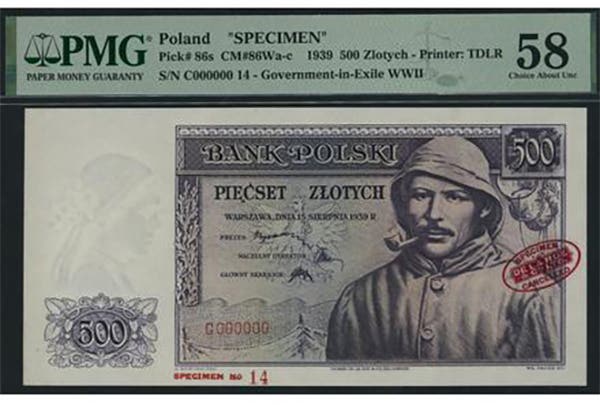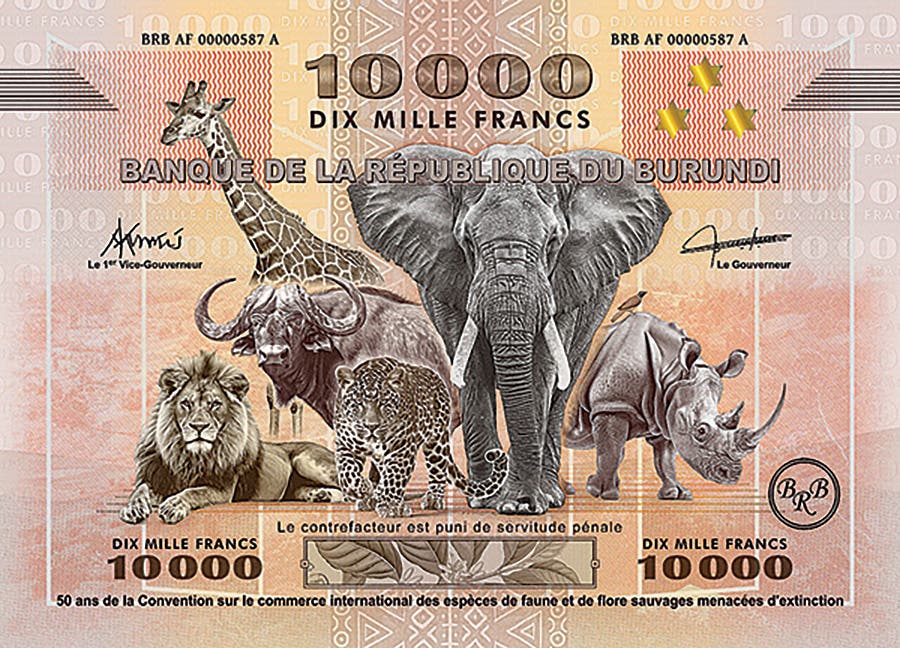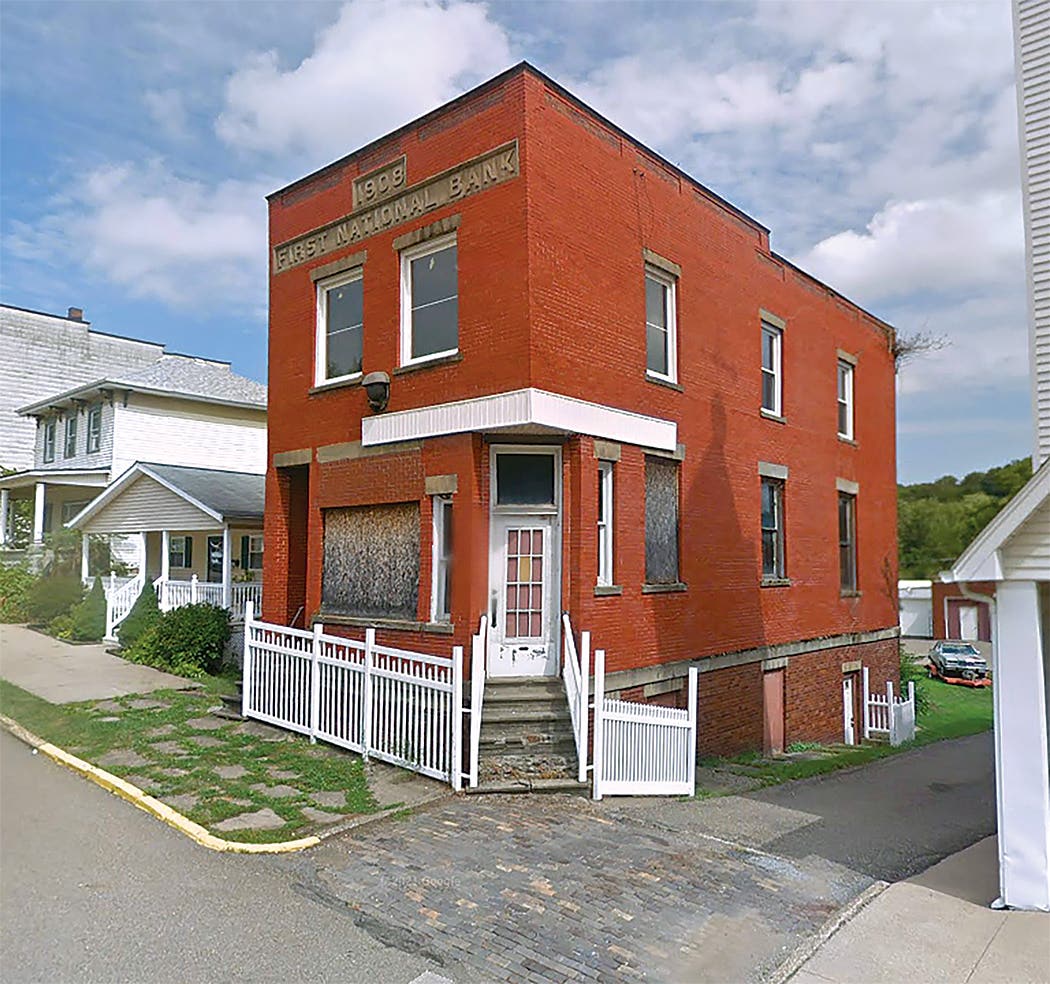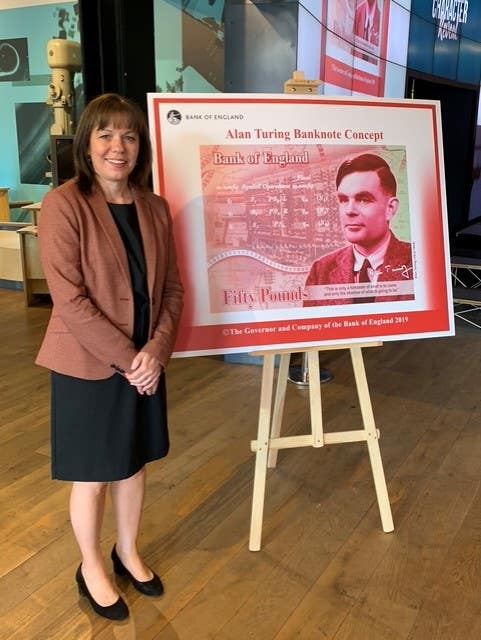First Treasury Serial 1,000,000 National Up for Auction
The first national bank note bearing Treasury sheet serial 1,000,000 to reach a numismatic auction was consigned to Stack’s Bowers Galleries. It was lot 20341 in the Winter 2022 Showcase…
The first national bank note bearing Treasury sheet serial 1,000,000 to reach a numismatic auction was consigned to Stack’s Bowers Galleries.
It was lot 20341 in the Winter 2022 Showcase Auction held Thursday, Nov. 3 at Stack’s Bowers Galleries Headquarters in Costa Mesa, Calif.
This offering ends a decades-long wait by national bank note collectors to even see such a note, let along have a crack at one.
The note is a $5 1902 red seal from The American National Bank of San Diego, Calif., charter 7418, bearing serial A1000000-171-B. It ranks by virtual of its Treasury serial as the most remarkable national bank note discovery to come to market this year.
Treasury sheet serial 1.000.000 is the highest Treasury serial number used on large-size nationals. It was never used on small-size nationals.
The number one million was used only on nationals printed by the Bureau of Engraving and Printing. Thus, they occurred on only Series of 1875, 1882 and 1902 notes.
Treasury serial numbers overprinted on Original Series nationals arbitrarily ceased before reaching one million in every serial number block used for every sheet combination. The intaglio backs and faces of those notes were printed by bank note companies before the seals and Treasury sheet serial numbers were overprinted at the Currency Bureau in the Treasury Department.
Although I don’t know the provenance of this note, it is clear from its terrific condition that a bankers saved it at the time it was delivered to the bank. This is one of those notes that I unabashedly call uncirculated because it never saw the inside of a wallet. However, due to trivial handling it is technically graded a bit lower. Grade is totally irrelevant when it comes to a note like this. It is a beauty with terrific eye appeal and strong penned signatures.
The sheet containing this note was in the first printing of $5s for the bank. That printing was delivered from the Bureau of Engraving and Printing to the Comptroller of the Currency’s office on Nov. 7, 1904. The printing consisted of 5-5-5-5 sheets A999830-B349. 1-520. Of course, the printing also included sheets A999999 and B1.
If you were among the receiving bankers as these sheets came in, which would you prefer to save as a souvenir: A999830-1, A999999-170, A1000000-171, or B1-172?
Each sheet combination within each series was assigned its own set of Treasury serial numbers. All the notes on a given sheet carried the same number. The notes on a sheet were distinguished by their plate letter.
It was luck of the draw as to which banks received sheets with Treasury serial 1,000,000. Numbering was consecutive through the print orders for the combination. Invariably, when the million number came up, it occurred somewhere within the numbering of sheets for the lucky bank. Consequently, that bank got the rollover numbers 999,999, 1,000,000 and 1. In the case of the San Diego bank, the roll over occurred at bank sheet serials 170, 171 and 172.
The lack of other Treasury serial one million notes appearing before in auctions reveals that most receiving bankers didn’t pay much attention to them. They just weren’t saved as mementos, unlike bank serial number 1 sheets. The same can be said for sheets bearing Treasury serial numbers 999,999 and 1.
Table 1 reveals that only 308 such sheets were made. They simply weren’t needed for many of the little-used sheet combinations because numbering in those combinations never reached one million.
There were only 21 one million 1902 red seal sheets. Those for the 5-5-5-5 combination account for but 8 from that total.
The American National Bank of San Diego was organized Sept. 13, 1904, chartered Oct. 1, 1904, and liquidated Dec. 29, 1917 upon being merged into The First National Bank of San Diego, charter 3050. In the meantime, it had absorbed The Marine National Bank of San Diego, charter 9483, on March 18, 1916.
The subject note is signed by bank president Louis J. Wilde. W. C. Durgin is listed as the cashier in the 1905 annual report of the Comptroller of the Currency—the first such report for the bank, but his isn’t the signature on the note. The signer was William H. Hubbard, one of the organizers and founding cashier.
Louis J. Wilde (July 16, 1865–April 18, 1924) was a California banker and Republican politician. The following biographic material pertaining to him is distilled from Wikipedia.
Wilde was born in Iowa City, Iowa in 1865. He moved to San Diego in 1903 after living in Rochester, N.Y., Philadelphia, Penn. and St. Paul, Minn.
He intended to spend a winter in San Diego but liked it so well that he stayed and went into real estate and banking. He organized four banks, built the city’s first modern apartment house, built the Pickwick Theatre, raised money to complete the unfinished U.S. Grant Hotel, and in 1914 successfully argued for renaming D Street to Broadway.
He served as mayor of San Diego during 1917–1921. The 1917 race was a growth-vs.-beautification contest. Wilde argued for more business development; his opponent, department store owner George Marston, argued for better city planning with more open spaces and grand boulevards. Wilde called Marston “Geranium George.” whereas his own slogan was “More Smokestacks.” During the campaign he drew a great smokestack belching smoke on a truck that plied the city streets. Wilde won with the support of unions and businesses, and was re-elected two years later.
Wilde organized the Community Oil Well Company in 1920 to drill for oil in San Diego County. No oil was found and the San Diego Sun’s investigation accused the venture of improper spending.
He didn’t run for a third term in 1921 under a cloud of scandal. Instead, he moved to Los Angeles where he died in 1924.
The bankers at The American National maintained circulations of $25,000 from 1904 through 1908, $100,000 1909-1911 and $200,000 1912-1917. No report was published in the 1918 annual report of the Comptroller of the Currency.
Sources
Comptroller of the Currency, issued annually, Annual report of the Comptroller of the Currency: U.S. Government Printing Office, Washington, DC.








